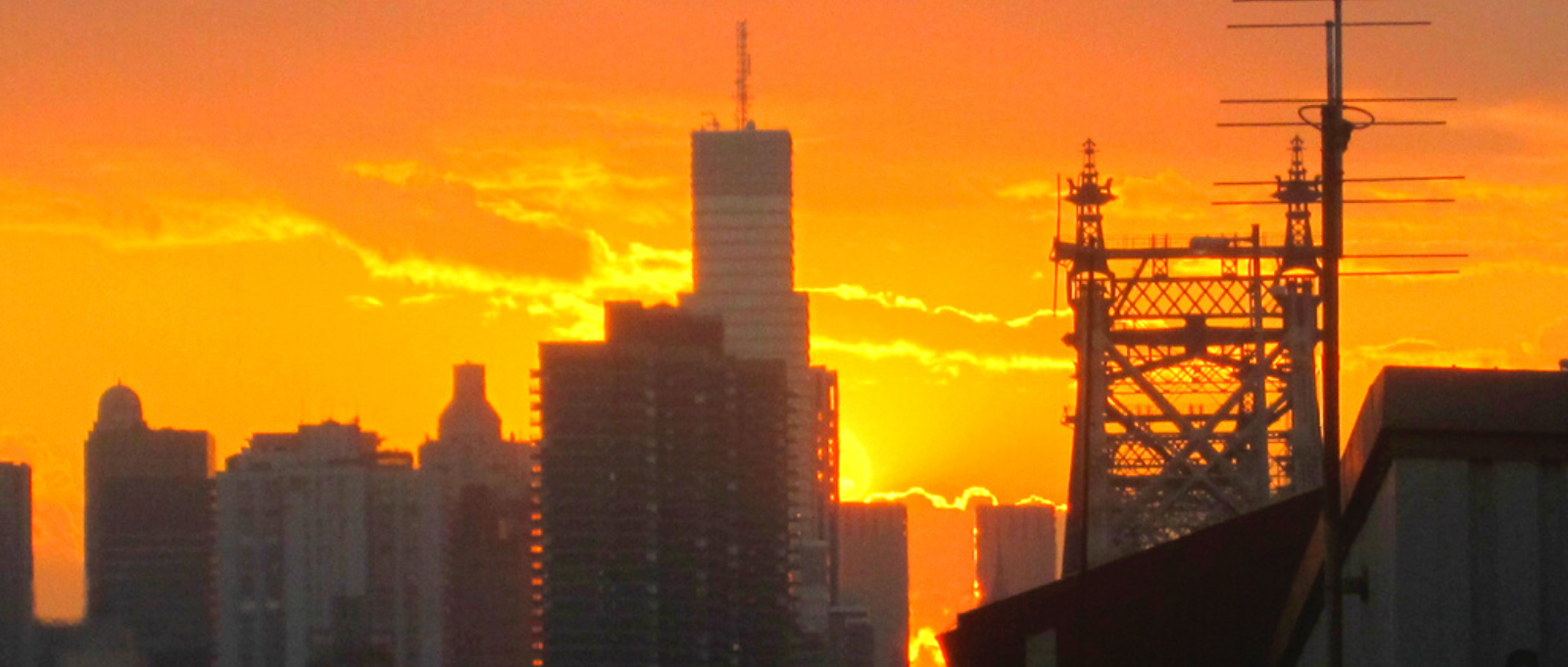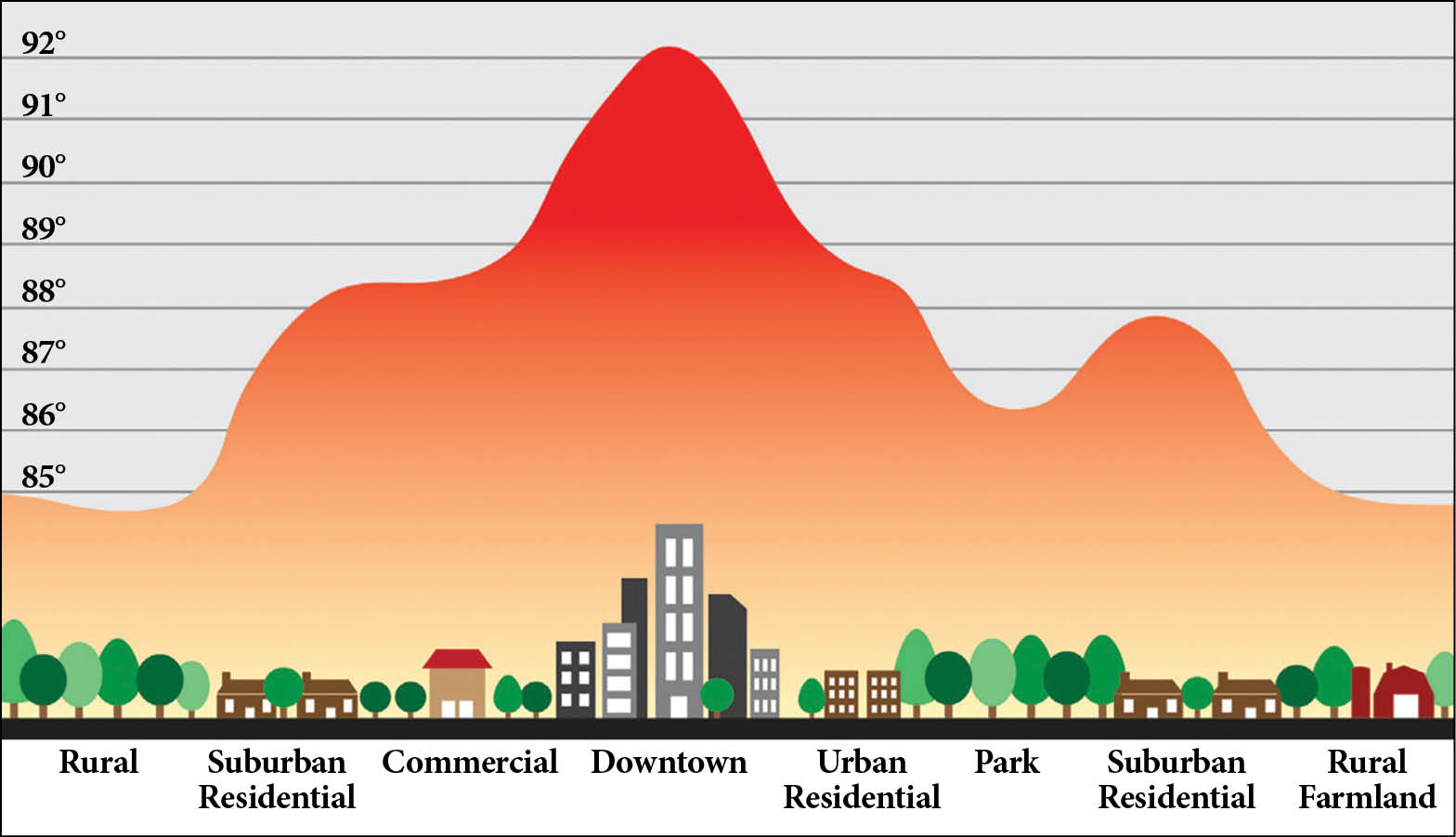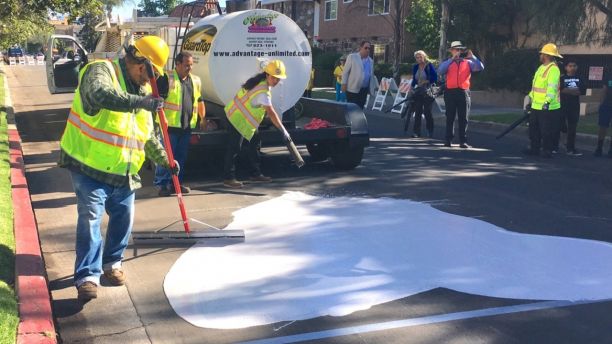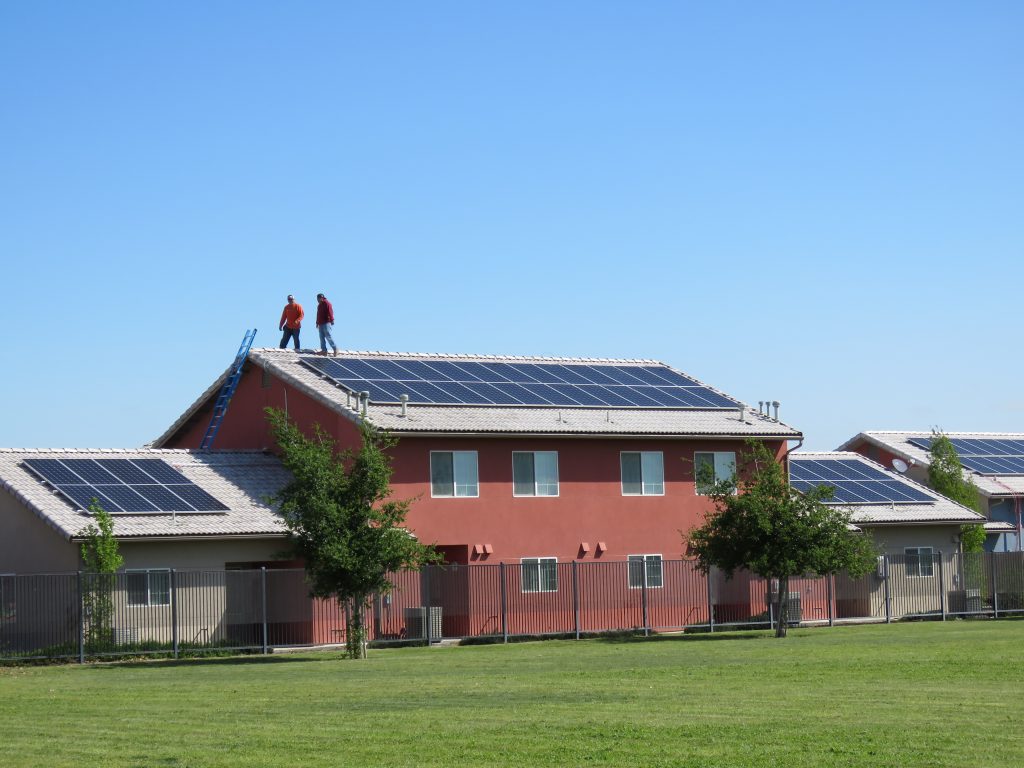August 27, 2018
Topic
“With greenhouse-gas induced warming temperatures, heatwaves are expected to become more common. The number and duration of heat waves will also increase and, again, high temperature records will be broken more frequently.”
-Robert Weisenmiller, Chair of the California Energy Commission
Across the nation communities are dealing with increasing heat.
We’re on a pace this year for the fourth-hottest year on record, according to the National Oceanic and Atmospheric Administration. The three previous records for average annual temperature – in 2015, 2016 and 2017 – have all occurred in the past four years.
Extreme heat waves are one of the most direct effects of climate, and are expected to become an increasing challenge for communities all over the world in the decades to come.
Currently, about 30% of the world’s population experiences at least 20 days every year on which the deadly threshold is reached. By 2100, this percentage jumps to 74% of the population if greenhouse gas emissions continue unchecked, according to a study published in Nature Climate Change.
“If we do the best that we can, which is the Paris Agreement, you are still going to have nearly 50% of the human population impacted, which is pretty bad,” said Camilo Mora, associate professor at the University of Hawaii at Manoa and the study’s lead author. “But if we don’t do anything, we are going to have [more than] 70% of the population affected by these heat waves, which is terrible.”
While California is, on average, warming, the highest relative temperature changes are predicted to occur along California’s coastline, where most of the state’s population is clustered. Heat was responsible for more deaths than any other natural hazard in California over the last 30 years (according to a 2016 study).
In 2006 alone, the North American heat wave killed more than 600 people and resulted in over 1,200 hospitalizations, 16,000 emergency department visits and nearly $5.4 billion in costs (Knowlton et al. 2009). The most severe death toll was in California.
That heat wave was abnormally humid, with very high nighttime temperatures that hindered physiological recovery at night – a trend that is expected to worsen as climate change persists.
Nearly 90% of all victims of the 2006 heat wave lived in socioeconomically deprived areas – defined as more than 50% of the population in their zip code living below the federal poverty threshold.
Vulnerable populations will continue to bare the largest risk of increasing extreme heat events.
Senior citizens across California, which are expected to grow significantly in the near-term, are the group most susceptible to heat related illness and death. In the 2006 heat wave, Californians over the age of 65 were found to be particularly affected, comprising 52% of all heat-related hospitalizations, though they only represent 11% of the state’s population.
On average, the 65-and-over age group worldwide is expected to grow by 145% by 2020 (California Department of Finance, 2014), potentially increasing the number of patients in need of medical attention during and following future heat waves. Extreme temperatures could cause two to three times more heat-related deaths by mid-century (UCS, 2006), but heat-related mortality for the over-65 age group could increase greater than 10 times by the 2090s (Sheridan, 2011).
The urban heat island effect
The tandem trends of urbanization and the growing development of impervious areas for commercial and residential space produces a positive feedback loop that exposes more individuals to the added risk of urban heat island effects.
The urban heat island effect is routinely observed when urban areas exhibit higher temperatures than nearby rural or suburban areas at the same time, especially at night. Cities with more impervious surfaces – including more cement, asphalt, metal and roof cover – tend to be hotter than surrounding rural areas. Impervious surfaces dominate land cover in urban landscapes, and amplify the severity and duration of heat waves within cities.
The urban heat island effect can add up to 22 degrees Fahrenheit to the average air temperature in a city, compared to the surrounding area, according to the EPA.
A number of studies have found strong correlations between the built environment, socioeconomic vulnerability and heat mortality, suggesting that communities of color and low-income populations are disproportionately exposed to heat-island risk factors (Uijeo, 2012).
Over the long term, efforts to build heat resilience through built-environment changes include improved building standards that result in the cooling of internal and external environments and land-use cooling strategies such as urban heat island mitigation through use of cool pavements, cool and green roofs, increased tree canopy cover, expanded green space and green infrastructure, and urban stream restoration (CAT, 2013).
Local solutions to beat the heat
Cool roofs and pavement
Roofs and pavement can be designed to reflect more sunlight and therefore absorb less heat by using highly reflective paint, sheet covering or highly reflective tiles or shingles (in the case of “cool roofs”).
In 2014, Los Angeles became the first major city with a “cool roofs” requirement. Under changes to the Los Angeles Green Building Code, new homes in the city – including rentals – must have roofs with materials that reflect sunlight, helping buildings be more than 50 degrees cooler on the surface. During a hot day, such roofing can lower a building’s interior temp by several degrees.
In addition to new construction, roof replacements of at least 50% must incorporate cool roofs. The city is also experimenting with “cool pavement.” The Los Angeles Bureau of Street Services says its streets that have been rendered lighter in color are 10 to 15 degrees cooler on average than city streets that haven’t.
Urban Greening
Urban forests can lessen the impacts of extreme heat by moderating climate and conserving energy use. Several California communities have taken advantage of cap-and-trade funding to target urban greening in underserved neighborhoods.
In Los Angeles, the Koreatown Youth and Community Center is engaging residents in the Pico-Union and South LA neighborhoods to increase the tree canopy in disadvantaged communities. Over the next few years, the center and its community allies will plant 1,120 trees and reduce greenhouse gas emissions by nearly 2,000 tons.
In Oakland, Urban Releaf will plant 1,100 trees along the International Boulevard corridor that transects vulnerable neighborhoods in severe need of investment to combat unemployment, poverty and the health impacts of pollution.
Oakland flatlands residents are “disproportionately burdened by diesel pollution and have some of the highest cancer risks in the Bay Area,” according to a 2010 study by Communities for a Better Environment.
Oakland’s tree-planting project, funded by the Greenhouse Gas Reduction Fund, will improve air quality, reduce greenhouse gas emissions by 31.36 million metric tons, and enhance the quality of life in some of the city’s most underserved communities.
Energy-efficient resilient homes
Lack of air conditioning increases the risk of illness or death in extreme heat events, which poses the greatest risk to the elderly; people with mental illness, chronic conditions or low incomes; people who are homeless or incarcerated; and those experiencing social or health-related vulnerabilities.
Urban heat islands disproportionately impact low-income communities of color. To reduce inequities, we must plan to keep vulnerable populations cool and safe during heat events. Yet, operating air conditioning increases greenhouse gas emissions, increases heat immediately outside artificially cooled buildings, can fail if peak demand causes power outages, and can be too costly for people with limited incomes.
In addition to urban greening and green/cool roofs, buildings should be made more resistant to heat waves with weatherization and energy-efficiency upgrades, provided by programs of the Department of Community Services and Development, the California Public Utilities Commission and investor-owned utilities.
In the Central Valley, residents are improving the energy efficiency of their apartments and their ability to weather extreme heat days common in a region where summer temperatures average in the mid-90s.
Self-Help Enterprises upgraded five properties across the Central Valley with improvements that included solar panels and a variety of energy-saving measures funded by the Low-Income Weatherization Program (LIWP). Altogether, the improvements will cut these homes’ electricity consumption by 43%.
Turning up the heat on cooling down our communities
As communities face an increasing number of extreme-heat days, it will be critical for local leaders to address the immediate, short-term needs for cooling centers and heat alerts and to also take steps now to cool their communities and increase long-term resilience to heat.
These actions will not only help residents withstand extreme-heat days but also have a wide range of community benefits ranging from reduced energy bills and air pollution to improved mental health and increased home values.
Resources
- California Heat and Health Project A Decision Support Tool. Four Twenty Seven http://427mt.com/wp-content/
uploads/2017/01/427_CA_ HeatHealth_DecisionTool_ UserNeedsAssessment-1.pdf - Urban Heat Island Index for California: This interactive map shows urban heat islands in California, as measured by the Urban Heat Island Index, and can help local leaders prioritize investments: https://calepa.ca.gov/climate/
urban-heat-island-index-for- california/ - Safeguarding California Public Health Chapter: http://resources.ca.gov/docs/
climate/safeguarding/ update2018/safeguarding- california-plan-2018-update. pdf - CalBRACE: Preparing for Climate Change in California – A Public Health Approach. CDC has developed a five-step BRACE framework that enables health departments to incorporate the best available climate projections and epidemiology analysis into a traditional preparedness planning process. This approach supports the development and implementation of a unified climate and health adaptation strategy for a jurisdiction, while allowing flexibility for local and regional conditions and needs. The steps can be addressed in a sequence that best aligns with local priorities, opportunities and resources: https://www.cdph.
ca.gov/Programs/OHE/Pages/ CalBRACE.aspx - Low-Income Weatherization Program (LIWP) helps low-income property owners and residents of either single or multi-unit buildings to update their buildings to save energy and lower utility costs: https://
camultifamilyenergyefficiency. org/









